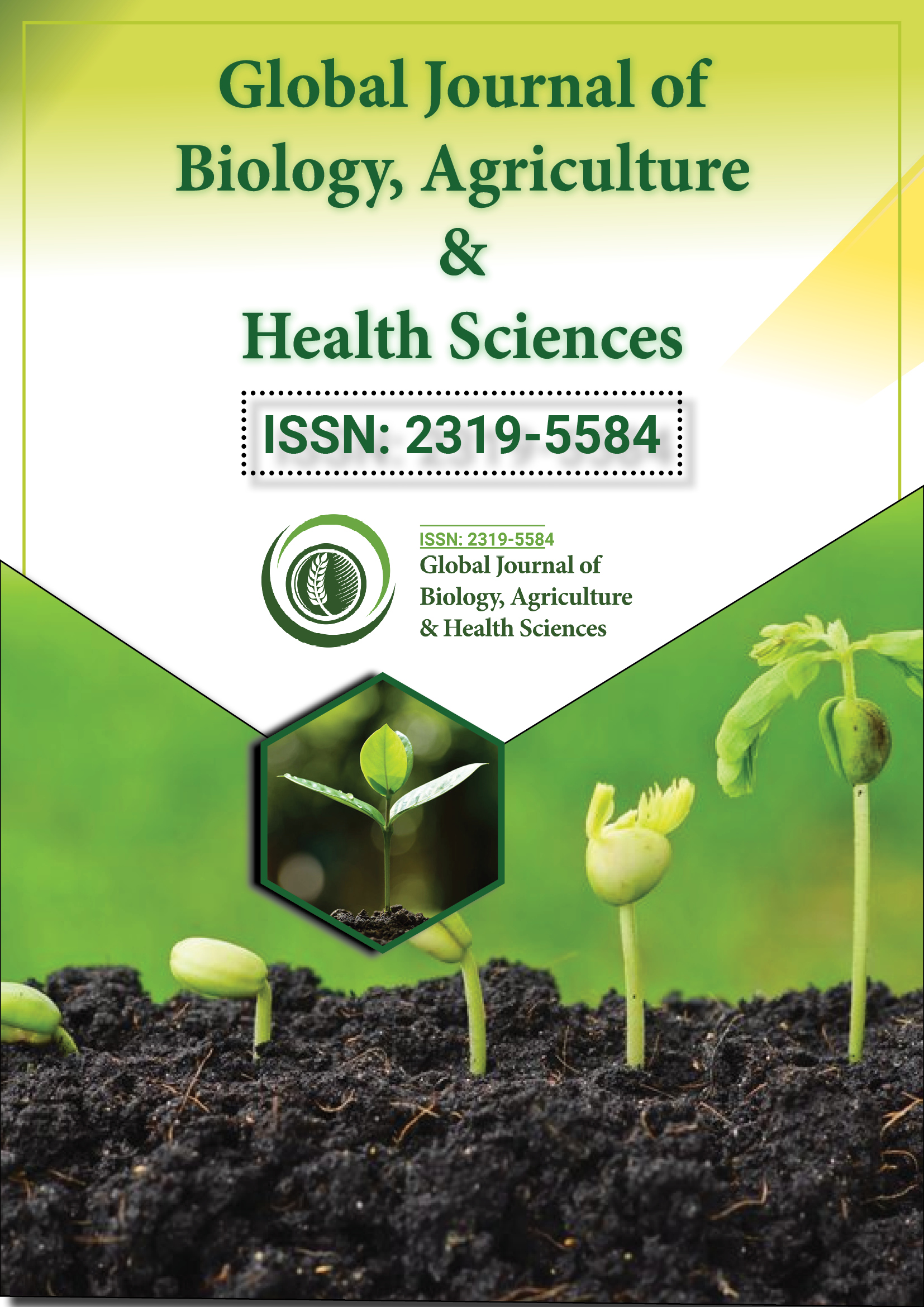Indexed In
- Euro Pub
- Google Scholar
Useful Links
Share This Page
Journal Flyer

Open Access Journals
- Agri and Aquaculture
- Biochemistry
- Bioinformatics & Systems Biology
- Business & Management
- Chemistry
- Clinical Sciences
- Engineering
- Food & Nutrition
- General Science
- Genetics & Molecular Biology
- Immunology & Microbiology
- Medical Sciences
- Neuroscience & Psychology
- Nursing & Health Care
- Pharmaceutical Sciences
Perspective - (2025) Volume 14, Issue 2
Influence of Antibiotic Use in Livestock on Resistance Patterns in Zoonotic Bacteria
Anika Schwarz*Received: 26-May-2025, Manuscript No. GJHABS-25-29933; Editor assigned: 28-May-2025, Pre QC No. GJHABS-25-29933 (PQ); Reviewed: 11-Jun-2025, QC No. GJHABS-25-29933; Revised: 18-Jun-2025, Manuscript No. GJHABS-25-29933 (R); Published: 25-Jun-2025, DOI: 10.35248/2319-5584.25.14.259
Description
The widespread use of antibiotics in livestock production systems has been a point of global attention for decades. These compounds are employed to treat and prevent disease, and in some regions, to promote faster animal growth. While antibiotics undoubtedly improve animal health and production efficiency, their use has unintended consequences, particularly the emergence of resistance among zoonotic bacteria those capable of transferring from animals to humans.
Zoonotic bacteria such as Salmonella, Campylobacter, and certain strains of Escherichia coli are common in livestock environments. They are capable of colonizing the gut or surfaces of animals, often without causing clinical disease in the host. When antibiotics are administered, especially at sub therapeutic levels over long durations, selective pressure favors those bacteria with mutations or mobile genetic elements that allow survival. These resistant strains can then multiply and dominate microbial communities.
Routes of transmission from animals to humans are numerous. Direct contact between farm workers and animals, consumption of undercooked meat, contamination of produce via manure or irrigation, and environmental exposure through runoff from livestock farms all serve as pathways. Once in human populations, these resistant bacteria can cause infections that are harder to treat, requiring second-line drugs or longer treatment courses, both of which carry higher risks and costs.
The genetic mechanisms underlying resistance often involve plasmids, transposons, or integrons genetic units capable of moving between bacterial cells and even across species. A single plasmid may carry resistance to multiple antibiotics, making its transfer particularly concerning. These mobile elements can be acquired not only by pathogenic bacteria but also by normally harmless commensal organisms in the human gut, creating reservoirs of resistance that can later be mobilized.
One particularly concerning case involves Campylobacter jejuni, a bacterium frequently found in poultry. Resistance to fluoroquinolones, a class of antibiotics used to treat severe gastroenteritis in humans, has been increasingly detected. Studies show a strong correlation between fluoroquinolone use in poultry farms and the emergence of resistant strains in human clinical cases. Similar trends are observed in Salmonella enterica, where multidrug-resistant strains have emerged in pig and cattle operations and subsequently been isolated in human infections.
Efforts to reduce antibiotic use have been implemented with varying success across regions. In the European Union, the ban on antibiotic growth promoters led to decreased overall usage, with some countries reporting a significant drop in resistance prevalence. However, in other regions where regulation is weak or enforcement inconsistent, antibiotics continue to be used widely, often without veterinary oversight. The global nature of trade and travel means that resistant strains can quickly cross borders, rendering isolated interventions less effective unless supported internationally.
Alternatives to antibiotics are under investigation. Probiotics, prebiotics, bacteriophages, and vaccines are being explored as means to control disease and support animal growth without contributing to resistance. These alternatives are often more specific and require tailored application, posing challenges for large-scale commercial adoption. Improved husbandry practices, including hygiene, biosecurity, and stress reduction, also contribute to lower disease incidence and hence reduced antibiotic need.
Conclusion
Antibiotic use in livestock systems contributes significantly to the development and spread of resistance in zoonotic bacteria. Managing this issue requires a multifaceted response involving surveillance, regulation, alternative therapies, and education. Since bacterial populations and their genetic material do not recognize national boundaries, a global perspective and coordinated action are required to mitigate risks to both animal and human health. Regulatory frameworks must strike a balance between ensuring animal welfare and minimizing public health risks. This requires evidence-based policies that reflect regional realities while aligning with international guidelines.
Citation: Schwarz A (2025). Influence of Antibiotic Use in Livestock on Resistance Patterns in Zoonotic Bacteria. Glob J Agric Health Sci. 14:259.
Copyright: © 2025 Schwarz A. This is an open-access article distributed under the terms of the Creative Commons Attribution License, which permits unrestricted use, distribution and reproduction in any medium, provided the original author and source are credited.

